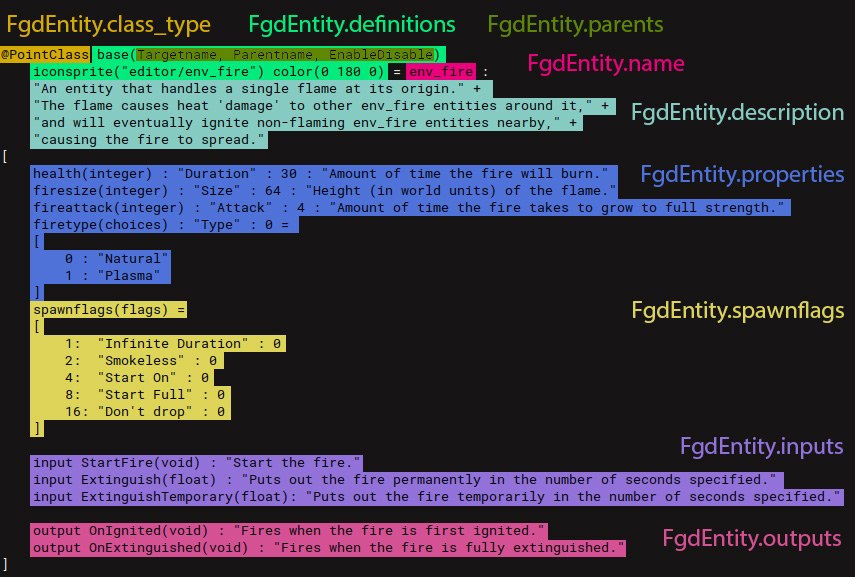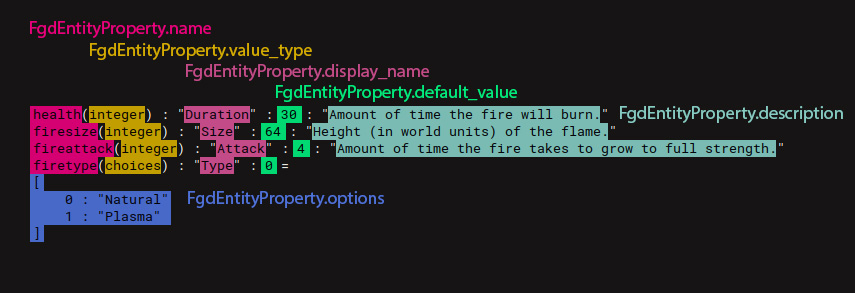Quickstart¶
Get yourself up and running quickly.
Installation¶
PyPI¶
ValveFGD is available on the Python Package Index. This makes installing it with pip as easy as:
pip3 install valvefgd
Git¶
If you want the latest code or even feel like contributing, the code is available on GitHub.
You can easily clone the code with git:
git clone git://github.com/pySourceSDK/ValveFGD.git
and install it from the repo directory with:
python3 setup.py install
Usage¶
Here’s a few example usage of ValveFGD
Parsing¶
You can get a Fgd object by parsing an .fgd file using FgdParse
> from valvefgd import FgdParse
> fgd = FgdParse('C:/Program Files (x86)/Steam/steamapps/common/Team Fortress 2/bin/tf.fgd')
Writing¶
You can write an .fgd file from a Fgd object. It will write the fgd as it was parsed. The content of included Fgds will not be written unless you use the ‘collapse’ option.
Note
Parsing/writing is destructive. Comments will be lost. The original structure of the file may be altered. The actual data about entities and the inheritance hierarchy is untouched however.
> from valvefgd import FgdWrite
> FgdWrite(fgd, 'tf-clone.fgd')
> FgdWrite(fgd, 'tf-clone.fgd', collapse=True)
Getting entity schemas¶
You can get entity schematics from an Fgd object.
> env_fire = fgd.entity_by_name('env_fire')
> print(env_fire.schema)
{'properties': {'targetname': {'type': 'string', 'description': 'The name...'}, ...},
'inputs': {'StartFire': {'type': 'void', 'description': 'Start the fire'}, ...},
'outputs': {'onIgnited': {'type': 'void', 'description':'Fires when...'}, ...}}
Terminology¶
Here are some color coded charts for the terminology used in this library for fgd files.
FgdEntity¶

FgdEntityInput/Output¶

FgdEntityProperty¶

FgdEntityPropertyOption¶

FgdEntitySpawnflag¶

